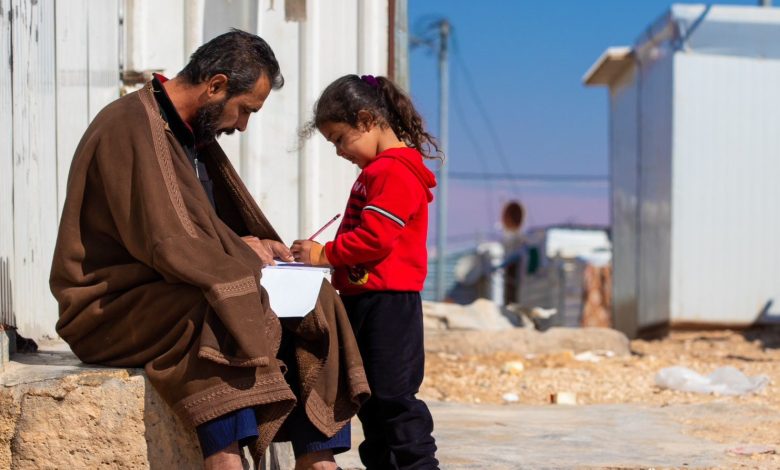
Jordan Daily – UNHCR’s new socio-economic survey 2024 on refugees in Jordan shows a reemergence of a humanitarian crisis, about which the Agency has been warning over the past months.
According a statement , new data indicates a spike in poverty among refugees in communities and camps from 57 per cent to 67 per cent over the past two years that were also marked by economic challenges for vulnerable Jordanians. Two out of three refugee families are categorized as poor based on analysis of UNHCR data, as the average monthly incomes of refugees decreased significantly. This is one of the key findings of this survey by UNHCR, the UN Refugee Agency.
The survey which is also known as VAF (Vulnerability Assessment Framework) offers an in-depth analysis of the socio-economic situation of refugees and shows a 12 per cent drop in income among Syrians in communities over the past two years, in Azraq and Zaatari camps the drop was even bigger.
66 per cent of Syrian families in communities are already limiting how much they eat, whereas 71 per cent of refugees of other nationalities are resorting to this desperate measure (both up from 58 per cent). The number of refugee girls and boys working has tripled to 11 per cent since 2022, undermining their ability to attend school.
The new UNHCR survey also reveals deteriorating housing conditions in both camps and communities. 69 per cent of refugee households in villages and towns were found living in sub-standard conditions with no natural light or ventilation, safe electrical installation, protection, or in a home with a leaking roof or broken window. The containers in Azraq and Zaatari camps, too, were found to be in poor shape. About one in two refugee families reported frequent issues with rodents or insects in their wastewater systems. Among refugees in communities, 44 per cent do not have any legal protection from eviction through a formal rental contract.
“We have warned repeatedly that the situation of refugees would slide back into a humanitarian crisis if donor support was not sustained”, says UNHCR’s Representative Dominik Bartsch, “the results of the assessment now provide clear evidence that it is already happening: a humanitarian crisis is reemerging.”
The 2024 VAF introduces a novel climate vulnerability index for refugees which captures their exposure to extreme weather such as heat waves, reflecting refugees’ sensitivity and their capacity to adapt. Some 40 per cent of refugees in Jordan are vulnerable to climate change, the UNHCR survey shows. 36 per cent saw their homes in communities being damaged by rain or water coming in, 14 per cent by storms, including sandstorms. More than half of the shelters in camps were affected by the elements. “This shows the importance of investing in the capacity of all people in Jordan to adapt to climate change”, says Bartsch. “More of the same won’t do.” The UNHCR Representative pleads for development planning that involves refugees. “More sustainable solutions are needed for their situation in Jordan, especially for refugees in camps that are more vulnerable to economic and climate shocks.”
The survey data also confirms a strong desire among refugees to achieve self-reliance and contribute to the host communities. The findings show that more than half of Syrian refugee families have a working family member, and they depend on work income as their primary source of livelihood. Similarly, work is an important source of income for non-Syrian refugee families, but likely due to their limited employment opportunities, they rely more heavily on other income sources such as humanitarian assistance.
The survey is based on interviews capturing the situation of over 34,000 refugees of Syrian, Iraqi and other nationalities. It consists of two volumes, one on refugees in camps, one on refugees in communities, which were developed in collaboration with the World Bank and WFP, the World Food Programme.
“As the most comprehensive survey of the socio-economic situation of refugees in Jordan, it would not have been possible without the support of the two largest donors USA and Germany to our programme in Jordan, the statement noted.

